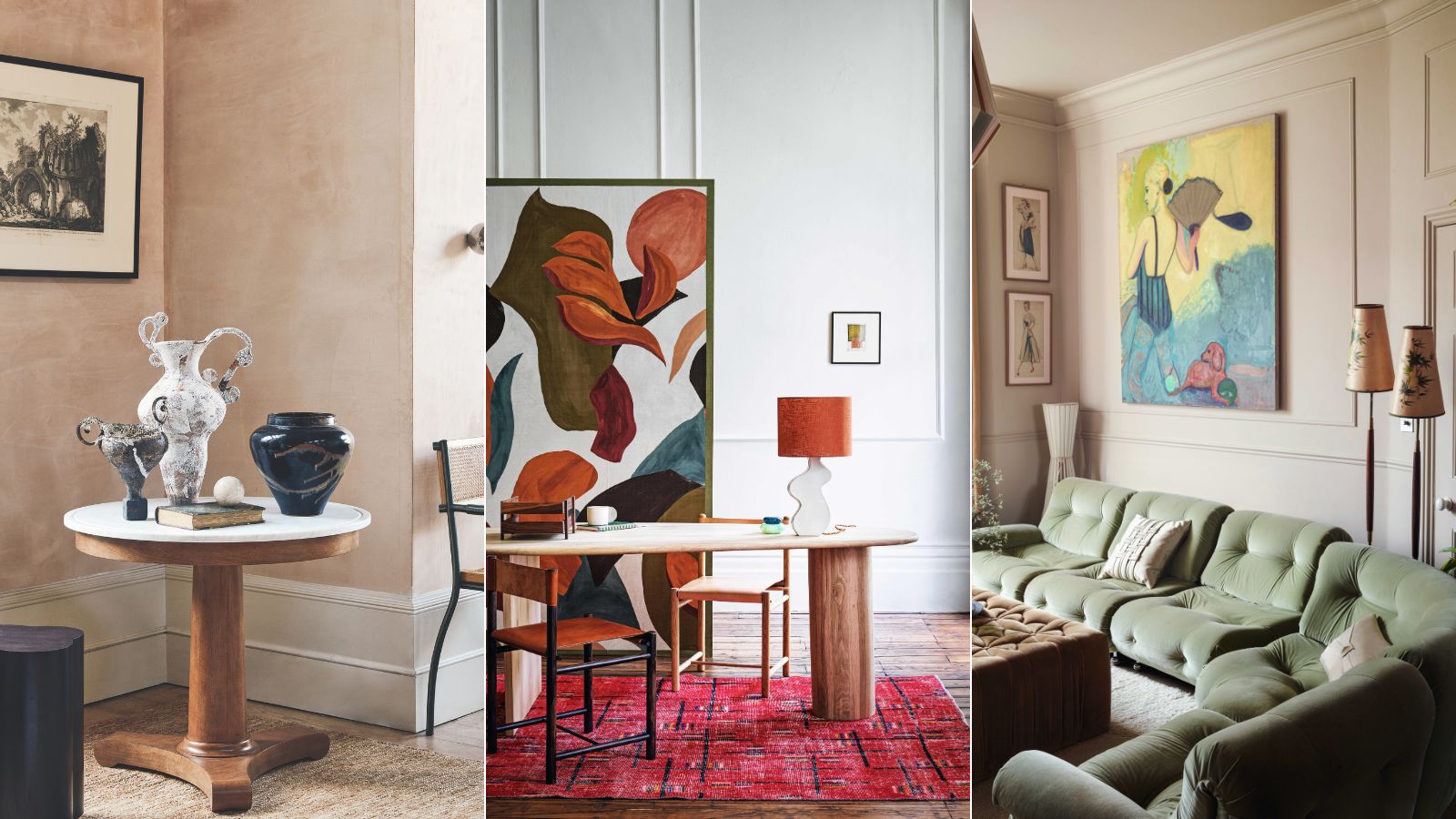
The way art is displayed is often as important as the artwork itself. Choose the wrong frame, the wrong space, the wrong approach and even your favorite pieces won't work. But get the display right and artwork can be the focal point of a room. elevating a space and adding texture and depth and character.
Whether it's sculptures, paintings, ornaments or tapestries, decorating with art can uplift a home. Displaying artwork can create engaging visual interest, instigate a talking point, and is often the final finishing touch that can help pull a whole design scheme together.
So in order to display your collections right, look to the experts. We asked interior designers and artists for their top tips on how to make artwork shine in a scheme.
How to display artwork and collections in your home
Whether you're exploring how to choose art for the home and need further advice on how to display, or are simply looking for some beautiful inspiration for your wall decor ideas, let us take you through 15 display design ideas to help you bring beautiful decoration into your home.
1. Curate a talking point by displaying artwork on a table
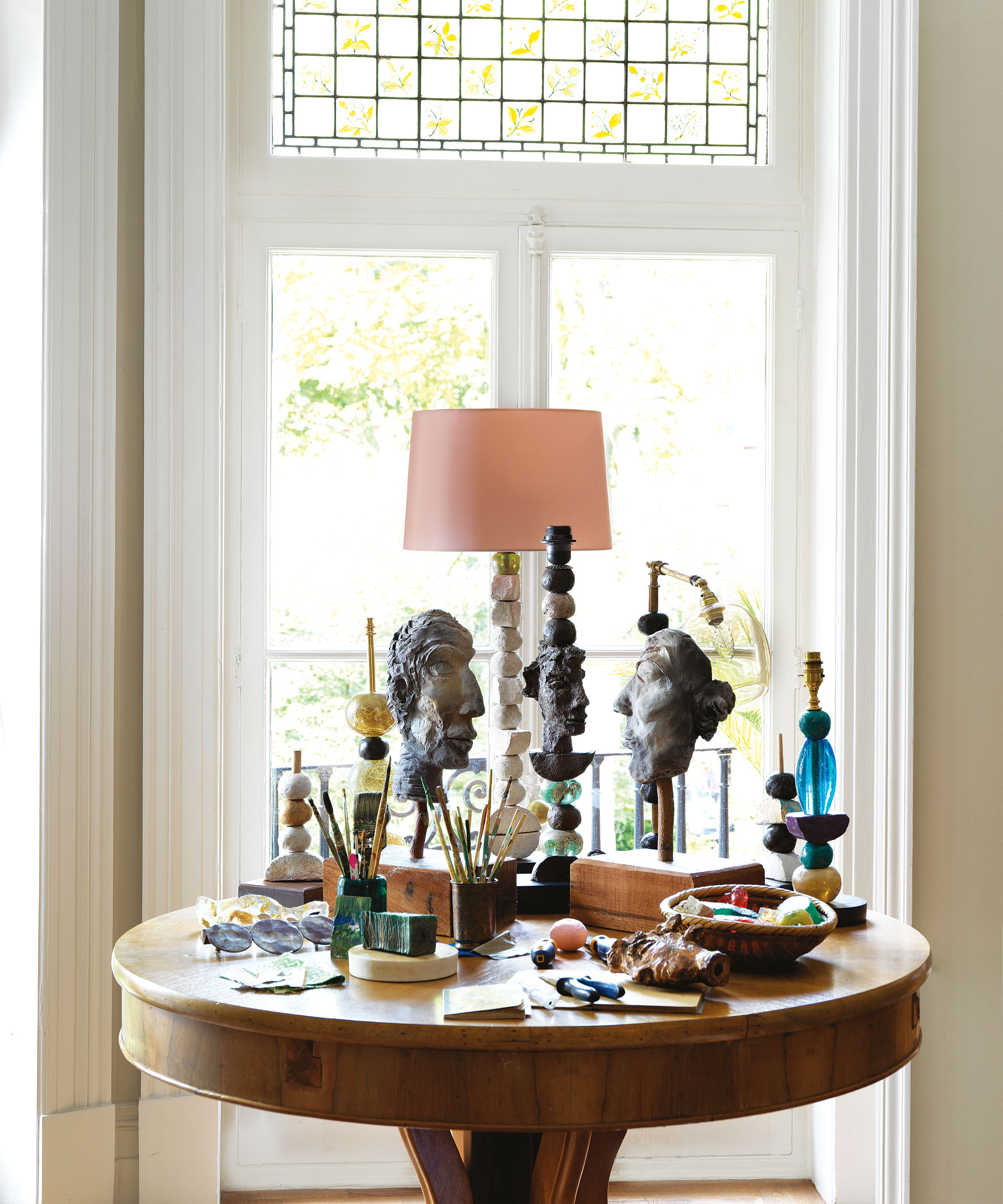
This eye-catching table display makes a conversational starter for guests in the home of the artist and designer, Margit Wittig, perfect for an entryway or living room.
‘The round table was one of the first pieces of furniture I ever bought, and it has been a key piece in every home I have had,’ says Margit. ‘It now doubles up as an inspirational work table and somewhere to display my finished pieces – an ideal option for anyone wanting to arrange art anywhere other than on a wall.’
She adds, ‘I have placed two sculpted clay portraits facing each other on wooden bases and a white contemporary geometric table lamp in the middle to soften and give height. The key to making a successful arrangement is to mix height and scale.
2. Show off your creative flair in a small space
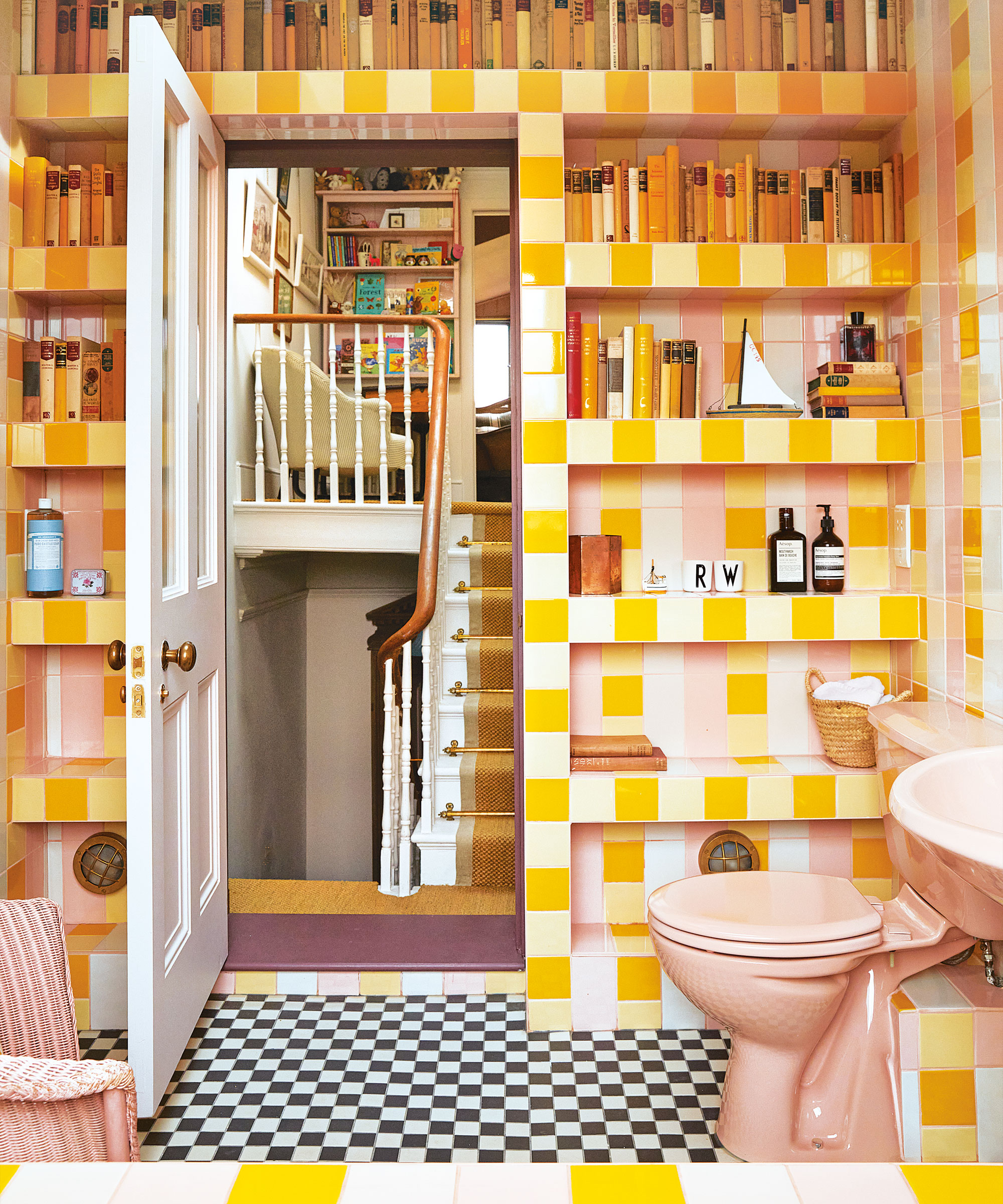
A small bathroom is a perfect place to play with color or pattern, as well as host art or objects.
‘We love displaying items, and a bathroom is no different than any other room,’ say Angus and Charlotte Buchanan of Buchanan Studio, who designed this stand-out space for their children.
A striking, immersive bathroom design, we love the joyful use of color for the bathroom tile ideas, and how the niche shelving makes clever use of the wall space, proving a practical and stylish storage and display area.
3. Hang artworks in a neat grid pattern
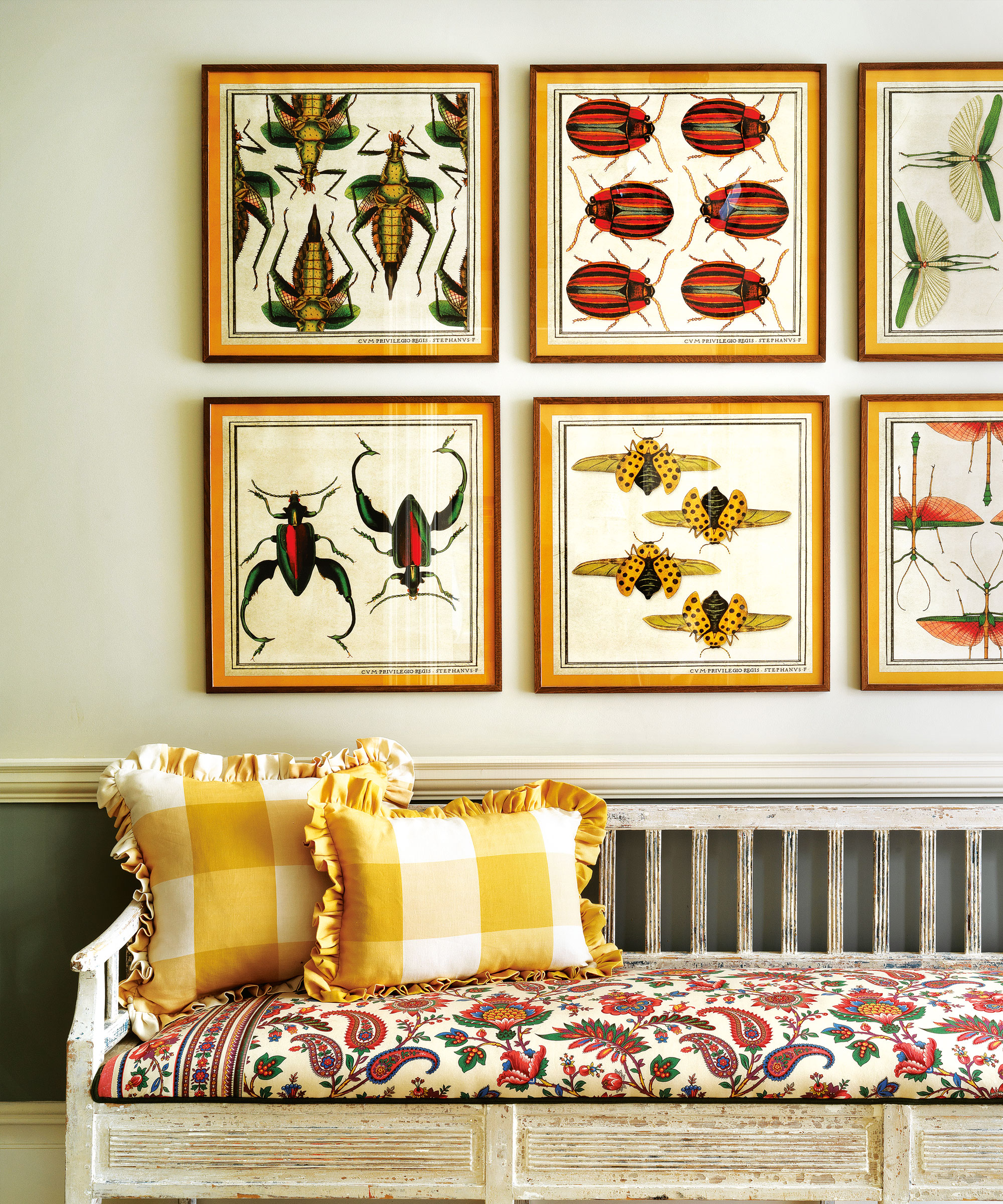
There’s something very pleasing about the symmetry of hanging paintings in a grid pattern, as this design by Salvesen Graham shows.
This display technique is a simple approach that works easily with sets of artwork, creating a well-balanced visual note in a room – a great way to incorporate a sense of symmetry into a space, too. The key is to create continuity by having each one in the same type of frame.
4. Decorate unexpected spaces with interesting collections
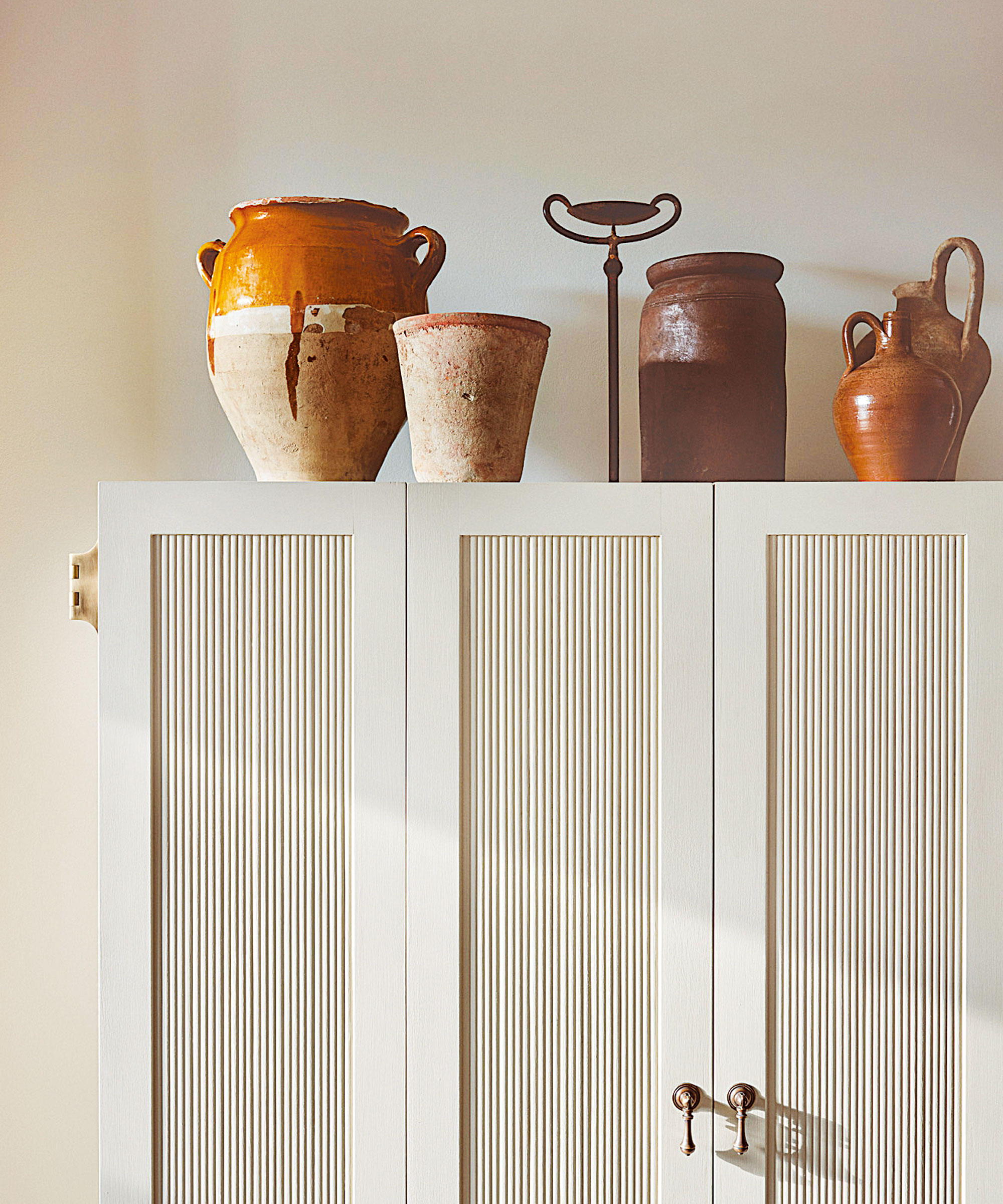
Displays of art don’t always have to take center stage in a room to leave an impact. Take advantage of any surface to house a collection of ceramics. In this case, a bespoke TV cabinet designed for a project by Albion Nord is crowned by a mox f antique pots, urns and candlesticks.
'We love the combination and balance of using antique, found and contemporary objects together to create a sense of evolution in a space,' says Camilla Clarke, co-founder and creative director, of Albion Nord.
5. Give a gallery wall more depth with paneling
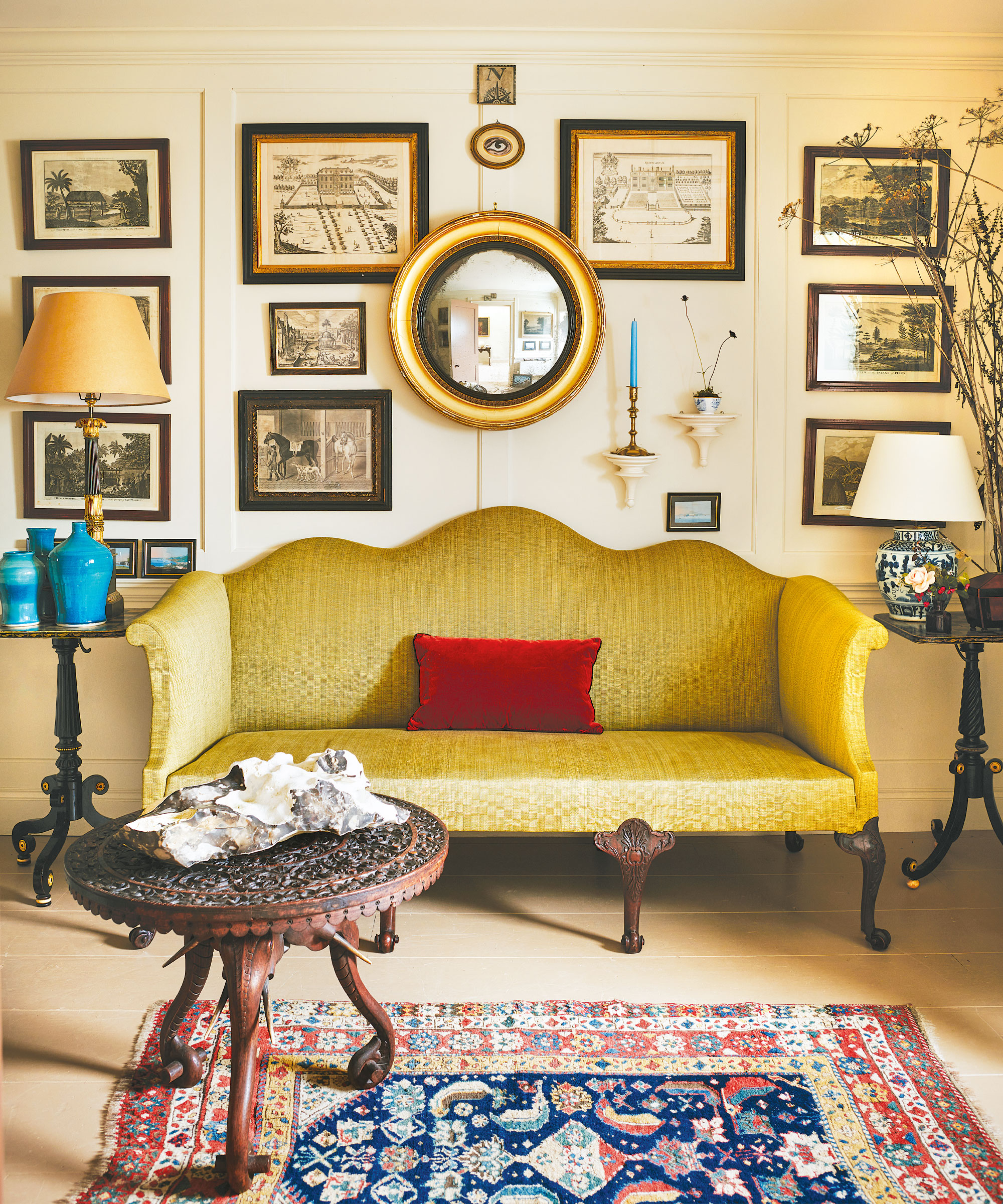
Gallery walls are popular in design schemes, but some are taking compositions a step further and including interesting brackets or wall paneling ideas for further interest.
‘Being a small space, this room needed a sense of intimacy,’ says interior designer and antique dealer, Max Rollitt. ‘Paneling adds texture and creates shadow and depth in a room.'
'And there’s no need to be frightened of hanging on paneling; the geometry of it will tempt you to center where you place things on each panel, but don’t be afraid to span a panel or style – or, indeed, cover up large areas. It’s only architecture. Likewise, brackets are an architectural element, but they can make for an interesting way to display things.’
6. Create a place for plates

For those who are nervous about hanging paper and canvases on bathroom walls, plates are a good alternative – they don’t mind a bit of splashing.
In this green bathroom scheme by Octavia Dickinson, she’s used plate stickers for hanging the plates. ‘I am a big hanger of plates on walls, but I especially love hanging them in a bathroom, so there’s something at lower eye level to gaze at when you’re having a bath,’ she explains.
'I like plates to be grouped together rather than one on its own; that said, I’d use a large serving plate on a wall, but surround it with paintings so it’s in good company. The fewer ordered plates are arranged, the better. I tend to stick to a similar size of a plate and build a cluster of them from the inside out.’
We offer further guidance in our dedicated feature, how to hang plates on a wall.
7. Introduce texture with a beautiful tapestry
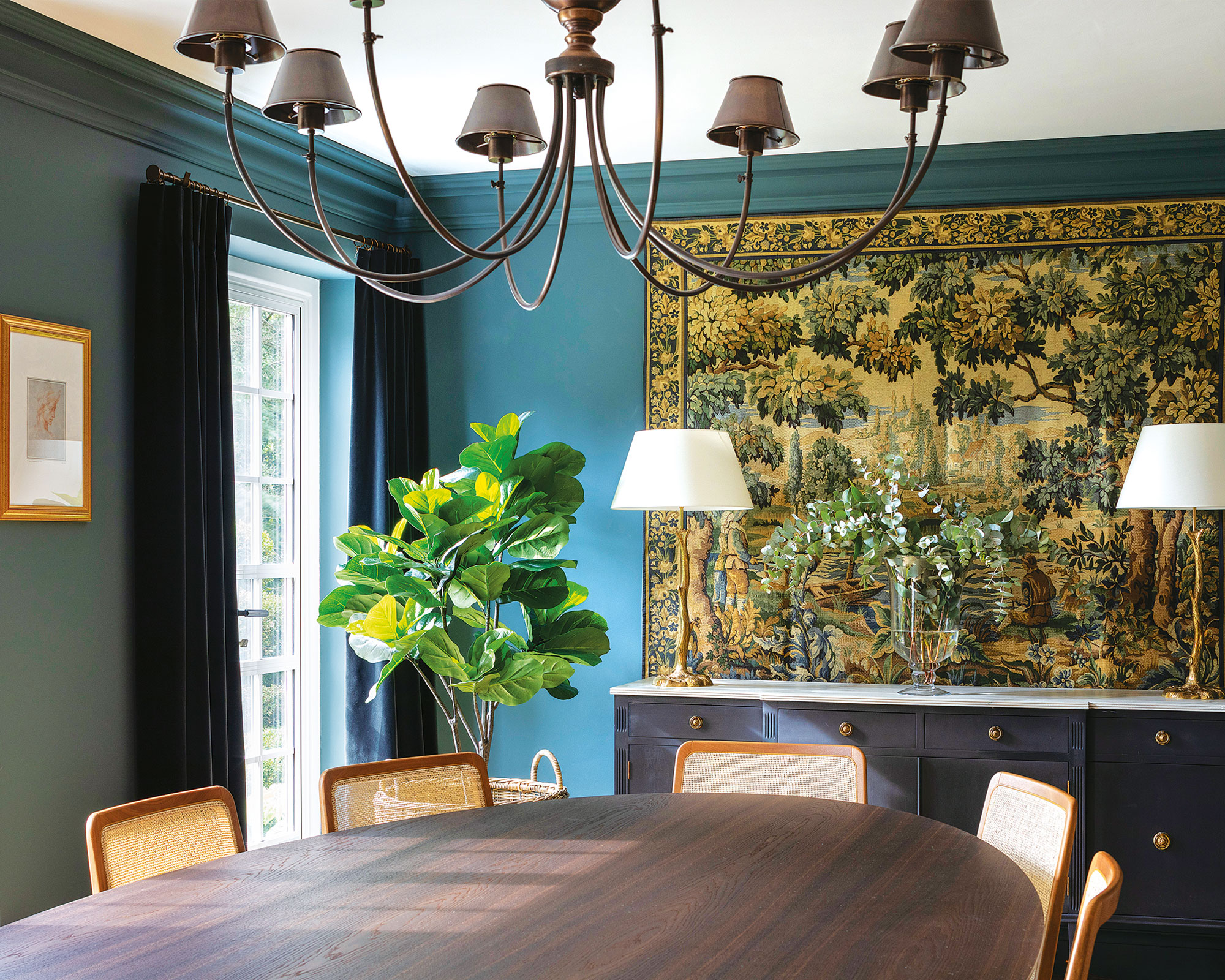
'Hanging tapestries as art is a great way to introduce texture, color and warmth into a space. They are also brilliant sound absorbers, which can help with acoustics in noisy rooms,' says Katie Lion, senior interior designer, Kitesgrove.
‘We sourced this beautiful antique tapestry in Paris and it serves as the focal point of this room,’ says Katie. ‘The tones informed our choice of the inky blue paint we used on the wall; it offsets the tapestry beautifully and stops it from feeling too traditional.'
Just like a beautiful wall mural, a tapestry can transform the look of a blank wall with eye-catching color, texture, and immersive, artistic design.
8. Use artwork to zone an area
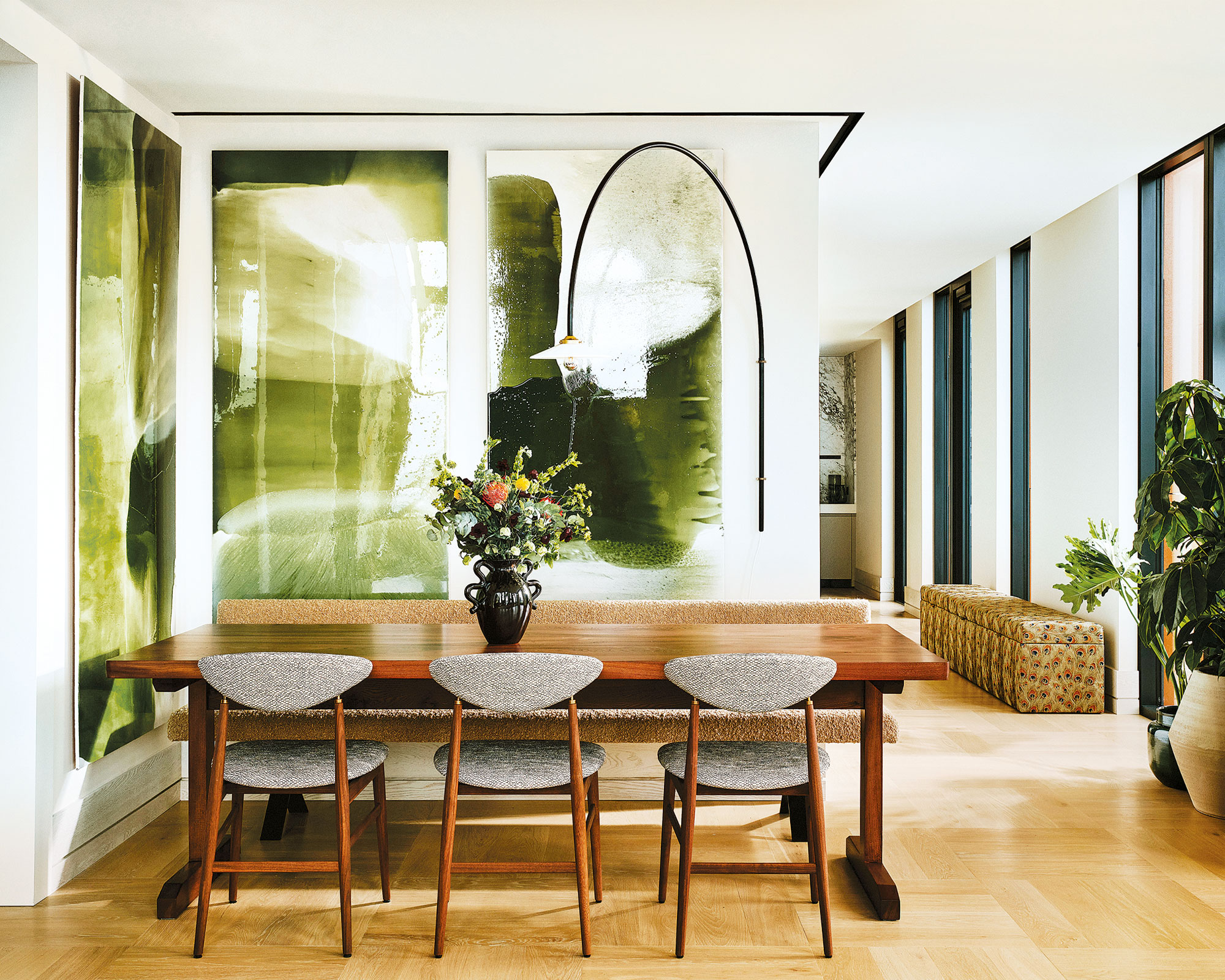
A piece of contemporary art can have a big impact on a room, lending it an edge. This triptych of glossy resin panels in rich greens by Fleur Simon was commissioned by Studio Ashby.
Creating a striking statement in this open-plan living space, the artwork helps to create a sense of rhythm and movement in the space. By having artwork on both walls, the designs work wonderfully to help zone the dining area, too.
9. Elevate pieces on a pedestal

Putting a sculpture or ceramics on a pedestal has the immediate impact of elevated status, and mirrors how these art pieces would be displayed in a gallery.
‘In this project, the oversized vessel with its worn patina and vibrant color makes a striking contrast to the pared-back palette,’ says Tom Cox, co-founder of Hám Interiors.
The elevated large vessel and smaller framed artwork on the wall make the most out of the alcove space, creating an inviting viewing area and design feature in this living room space.
10. Frame artwork within joinery
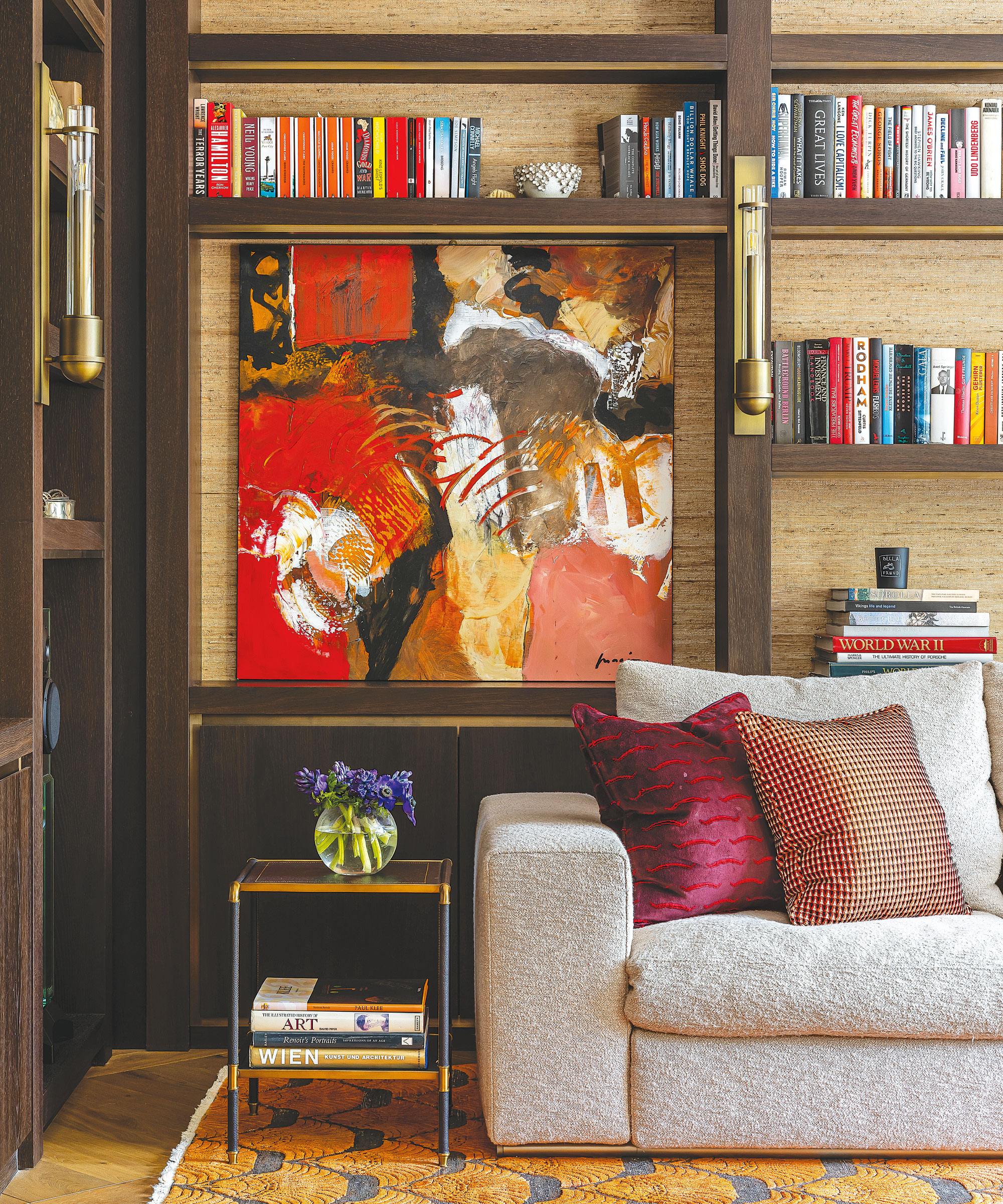
‘Placing artwork within joinery is a lovely way to hero a painting,’ says Samantha Todhunter, who decorated this library-meets-TV room. ‘Here, dark wood and textured grasscloth on the wall create a warm, luxurious color scheme that perfectly complements the abstract painting.’
The bespoke wooden shelving creates the perfect frame for the artwork and helps to ground and connect the painting to the room, with the colorful books on the surrounding shelves beautifully complementing the palette of the painting.
11. Use artwork to unite the old with the new
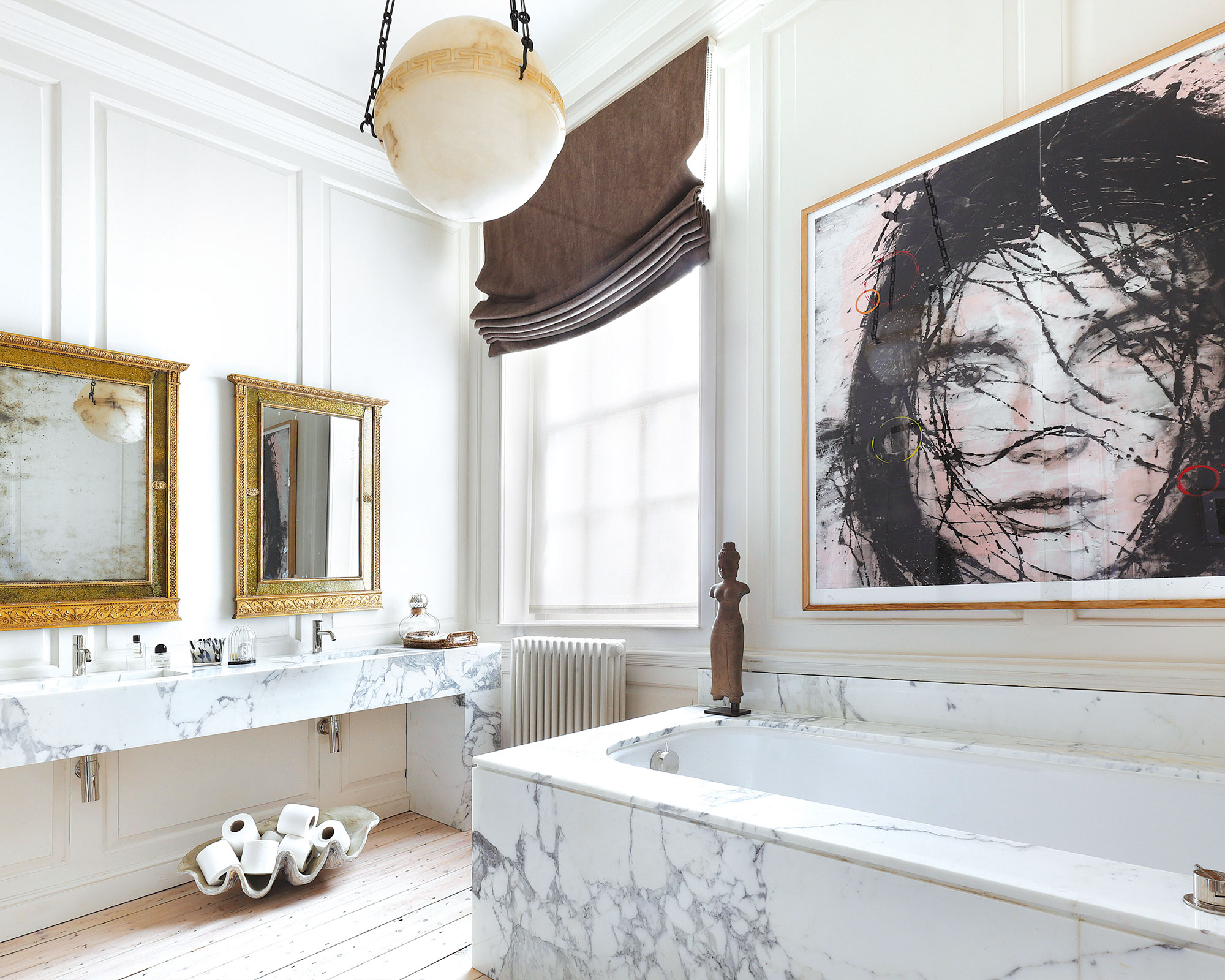
Contemporary art can be very happy in a bathroom, providing a contrast against more functional, clinical elements.
This scheme by Studio Duggan features a portrait painting by Spanish artist, Lídia Masllorens. Its scale ensures the design has a strong presence in the room, with the piece establishing a stylish contrast with the more traditional bathroom scheme.
12. Make a statement with repetition
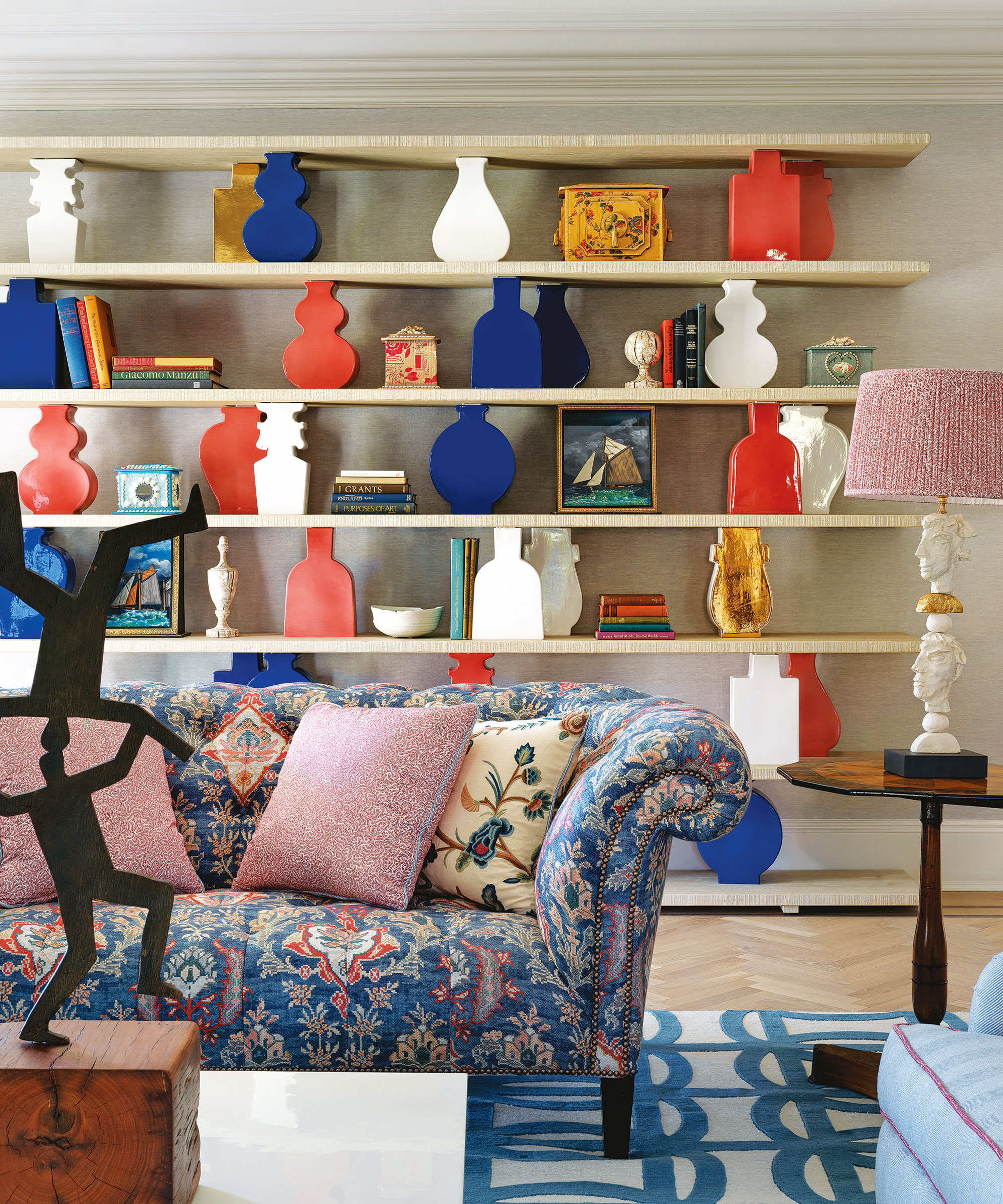
Shelves can act as art installations in their own right, without parting with thousands of pounds in the process.
Displaying objects of the same kind creates a meaningful and significant statement and sense of repetition – but the items don’t need to be high art. The act of styling a shelf and putting objects together on display using a strong color scheme can create a coherent thread and a beautiful visual impact.
Here, a series of pots of the same size have been used to support each of the shelves above with great effect. It’s a classic approach of Kit Kemp, interior designer and founder and creative director of Firmdale Hotels. ‘Combining color, vintage fabrics and a geometric rug was a fabulous way to refresh this living room,’ says Kit.
13. Don't just use shelves for books

No one should feel compelled to fill shelves with books – especially in a room that isn’t intended as a reading space.
This scheme by interior designer Christian Bense is the entrance hall of an apartment. Creating a pause between the front door and the rest of the home, the display of ceramics on the shelves of the joinery in raw timber is a welcome sight for visitors.
As passing spaces, entryways can be tricky to decorate with art as there is the assumption that no one will stop and look. Here, however, Christian has carved out a seating area, which invites people to sit and admire.
14. Embrace a maximalist style
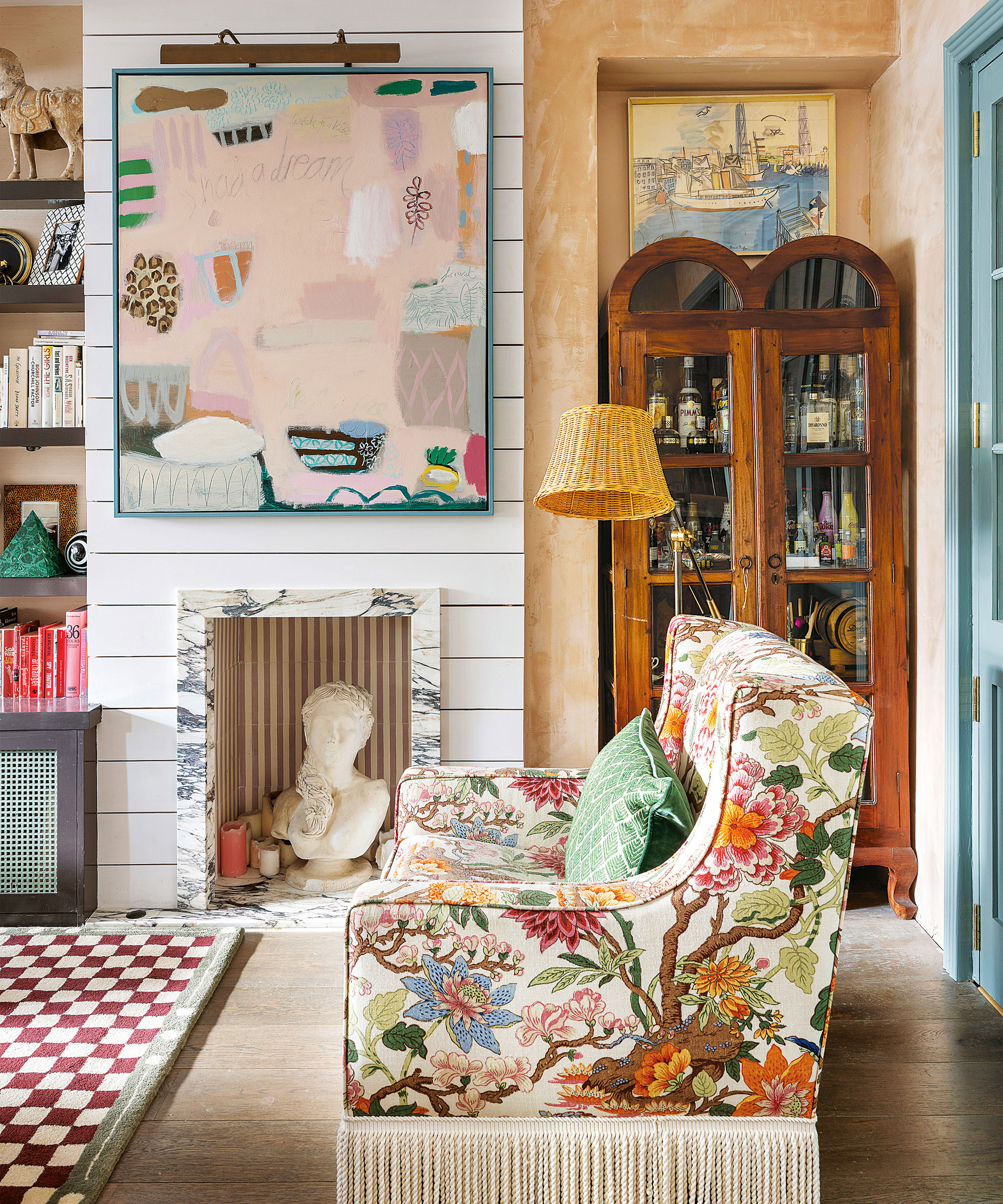
While it can be tempting to spotlight a favorite painting as a showpiece, at the same time as pulling back on decorative details lest they detract from it, it’s not the only way to go.
Lucy Sear-Barlow, of Barlow & Barlow, shows how to fold other artistic elements into a space with charming results for maximalist decor ideas.
Here, in the living room of Lucy’s former London home, a painting by Diane Whalley is hung in a foremost position above the fireplace. But also drawing the eye is a sofa covered in Magnolia by GP&J Baker, alongside a vintage cabinet that doubles as a bar. Taking a cue from the pink in the painting is a Chequerboard rug, part of a collaboration between Barlow & Barlow and Pelican House.
FAQs
Does artwork need to be framed?
A frame will not only protect a work of art, but it can also elevate the design, and help it look more balanced and appealing when mounted onto the wall.
Kit Kemp says, 'Remember to protect pieces within their frame to avoid exposure to water. A thick frame can also help to define the art, and create a sense of separation.'
A frame can also uplift a design with wonderful texture and contrasting color and pattern, as Georgia Spray, founder of Partnership Editions says, 'When framing an artwork, think about the colors you want to emphasize in the piece.'
If you're planning a gallery wall, a mixture of different frame colors and styles can make for an eye-catching and eclectic display. 'Don’t get too worried about whether frames match or not – I personally think a bit of mismatch is a great thing' says Spray.
Learning how to best display artwork and collections in your home will not only beautifully celebrate the work of an artist, it will help to spark wonderful moments of joy through enriched visual interest, character, and style.







